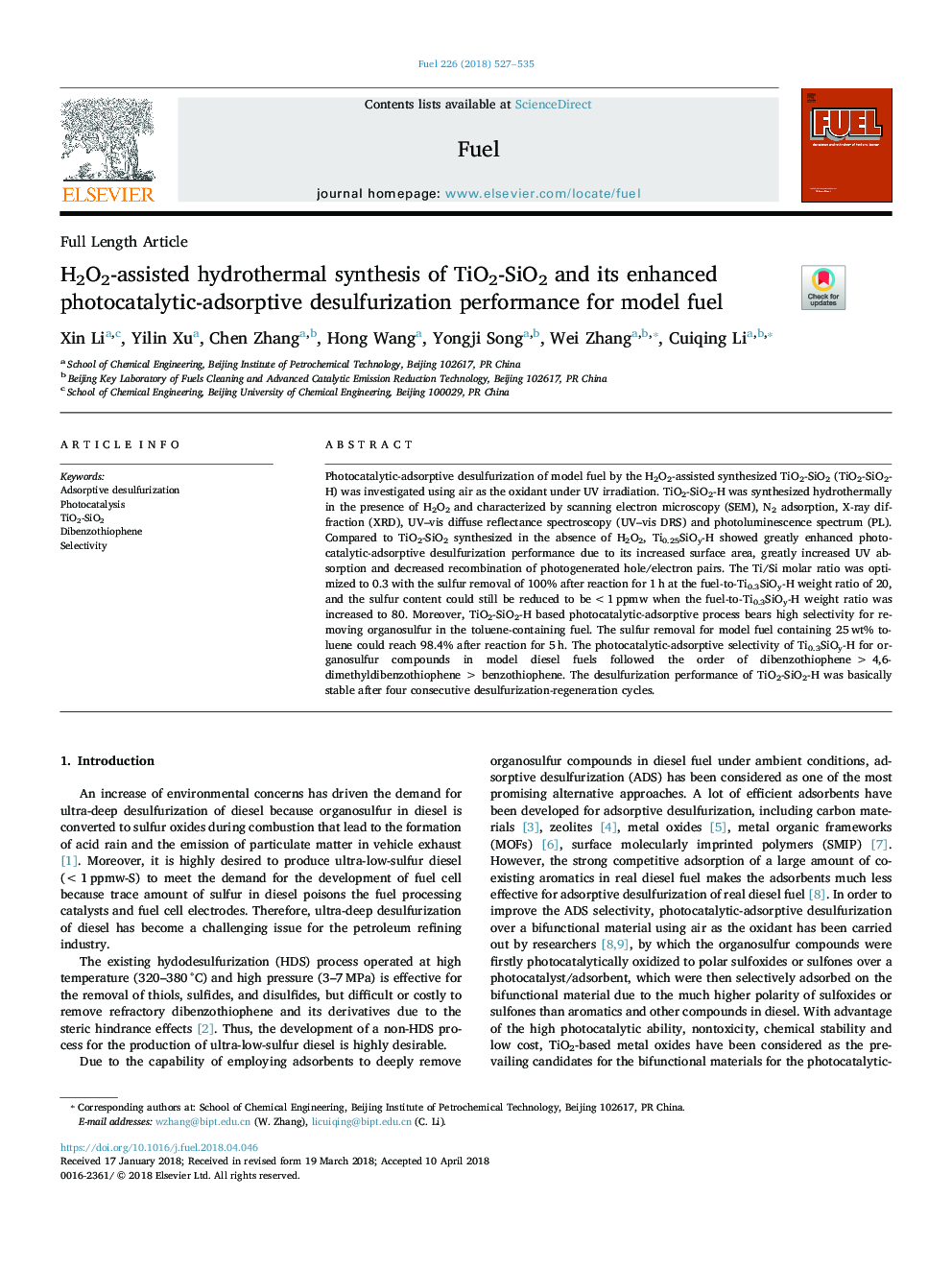| Article ID | Journal | Published Year | Pages | File Type |
|---|---|---|---|---|
| 6630932 | Fuel | 2018 | 9 Pages |
Abstract
Photocatalytic-adsorptive desulfurization of model fuel by the H2O2-assisted synthesized TiO2-SiO2 (TiO2-SiO2-H) was investigated using air as the oxidant under UV irradiation. TiO2-SiO2-H was synthesized hydrothermally in the presence of H2O2 and characterized by scanning electron microscopy (SEM), N2 adsorption, X-ray diffraction (XRD), UV-vis diffuse reflectance spectroscopy (UV-vis DRS) and photoluminescence spectrum (PL). Compared to TiO2-SiO2 synthesized in the absence of H2O2, Ti0.25SiOy-H showed greatly enhanced photocatalytic-adsorptive desulfurization performance due to its increased surface area, greatly increased UV absorption and decreased recombination of photogenerated hole/electron pairs. The Ti/Si molar ratio was optimized to 0.3 with the sulfur removal of 100% after reaction for 1â¯h at the fuel-to-Ti0.3SiOy-H weight ratio of 20, and the sulfur content could still be reduced to be <1â¯ppmw when the fuel-to-Ti0.3SiOy-H weight ratio was increased to 80. Moreover, TiO2-SiO2-H based photocatalytic-adsorptive process bears high selectivity for removing organosulfur in the toluene-containing fuel. The sulfur removal for model fuel containing 25â¯wt% toluene could reach 98.4% after reaction for 5â¯h. The photocatalytic-adsorptive selectivity of Ti0.3SiOy-H for organosulfur compounds in model diesel fuels followed the order of dibenzothiopheneâ¯>â¯4,6-dimethyldibenzothiopheneâ¯>â¯benzothiophene. The desulfurization performance of TiO2-SiO2-H was basically stable after four consecutive desulfurization-regeneration cycles.
Related Topics
Physical Sciences and Engineering
Chemical Engineering
Chemical Engineering (General)
Authors
Xin Li, Yilin Xu, Chen Zhang, Hong Wang, Yongji Song, Wei Zhang, Cuiqing Li,
